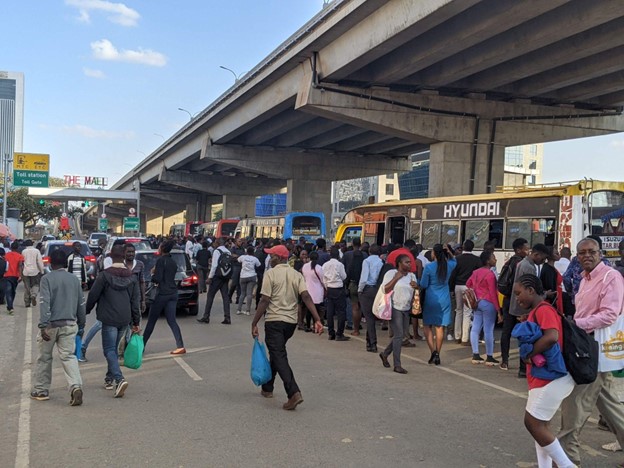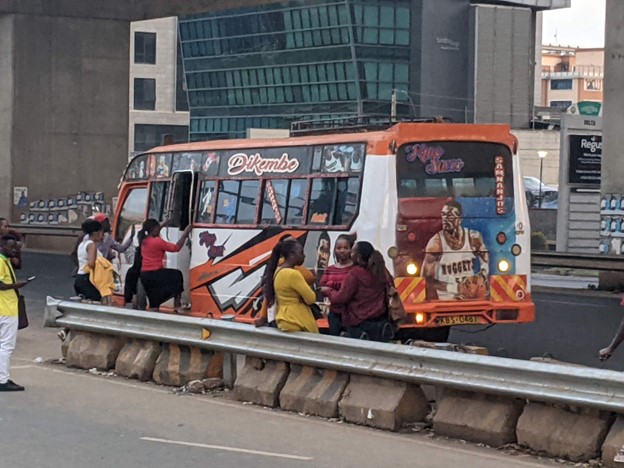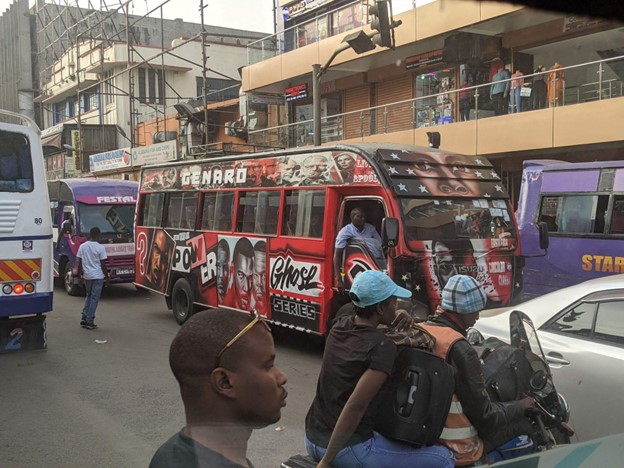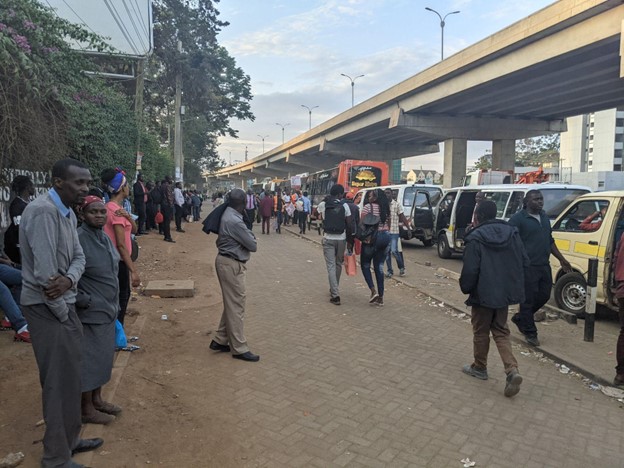What California can learn from African buses
While the Golden State splurges on infrastructure,
African cities show the greater efficiency of decentralized private transit.
By Scott Beyer | July 20, 2023
California, faced with its long-infamous traffic problems, wants taxpayers to embrace transit. It has spent decades funding high-speed rail, Bus Rapid Transit (BRT) and other infrastructure-heavy projects. Despite this investment, ridership has plummeted, causing complaints of death spirals and the need for more funding.
But arguably, the spending is not necessary, as less-regulated, self-supporting, free-market systems provide better transit than governments do. That occurs in African cities, which are full of decentralized private jitney bus systems.
Take the matatus of Nairobi, Kenya. A network of 20,000 commercial buses, they carry an estimated 70% of Nairobi residents. Buses are small to medium-sized – seldom as large as American public buses – and cost from $0.15 to $1.50 per ride, depending on trip distance and service quality.

To that latter point: no matatu is the same. Because they’re privately-owned, there’s competition to provide a better experience in hopes of collecting higher fares. Therefore many matatus have colorful murals, loud speakers and crazy lights, making them a cultural phenomenon.
Bus systems in other African cities, while more formalized than Nairobi, are still usually private. They’re regulated less by governments than self-regulation from driver guilds, although governments have proposed some new regulations. They are just as crucial to their respective cities as the matatus, carrying half or more of commuters.


Having rode many systems during a recent six-month tour of Africa, I found their privatized model had advantages over U.S. government transit. Five in particular are worth mentioning:
Right-of-way usage
In Africa, there is less expectation than in the United States that buses must drive and park in designated silos. Instead, drivers squat in-between rides on whatever random corners or curbs suit them, often bribing neighborhood parking mafias for this right. It enables bus drivers, using their ground-level market logic, to locate in areas with lots of foot traffic.
User convenience
Many U.S. transit agencies, even with technology, have not learned to remove friction from the user experience. How often have you entered a new city and opted out of using transit, because it was too confusing to buy a ticket and figure out which line to board? African bus systems are somehow better at this – even without technology.
I frequently walked up to these makeshift lots, showed someone on Gmaps where I wished to go, and got directed to the right bus. The zeal drivers have for attaining new customers, driven by the profit motive, made the process work. Contrast this with U.S. public transit workers who are notorious for being rude and unhelpful. Upon boarding, most payments are by cash, although some drivers accept bank transfers, a common transaction method in Africa.
Routing
Africa’s buses can change routes – sometimes by request mid-ride – and certainly when neighborhood growth emerges along select corridors. Routing is not totally unplanned, as the anti-competitive driver guilds sometimes dictate which vehicles go where. But it’s still a far more organic, market-oriented process than in the United States, where extending bus service somewhere requires major bureaucratic action.
Security
U.S. bus and rail stations have become havens for criminals, who are emboldened by lax security. But among the groups that can be found at African bus stops, along with riders, drivers, assistants and parking mafia, are the “security.” These are effectively goon squads for hire who enforce martial law on misbehaving patrons.
While African buses still have a dangerous reputation, it was not my experience while riding, and is frankly hard to imagine given the level of private enforcement in and around these vehicles.

Infrastructure-light
The most crucial advantage of Africa’s private buses is that they don’t require much infrastructure. Africa’s not a place of glistening new bus terminals and monorails – there’s just no money for that. Instead buses use the same road network as everyone else, and that’s about it.
The impacts are even less from lighter vehicle modes within Africa’s decentralized transit network. In Kigali, Rwanda, there are 30,000 motorcycle taxis. They put almost no weight on roads nor cause congestion – instead weaving right through it.
With these efficiencies in mind, California might consider looking abroad for its transit strategy. For decades it dumped money into capital-intensive, fixed-route projects. The price of its high-speed rail, which is being built along an objectively bad route, rose to $128 billion. San Francisco’s Central Subway cost $1.95 billion. California’s public transportation agencies are set to receive an additional $5.15 billion operating subsidy the next 5 years to address budget shortfalls. The state’s political class is less interested in finding ways to innovate or entice riders into these systems, than increase subsidies, no questions asked.

This political support remains because many California constituents like transit, too – even if it’s not convenient enough for them to use. An idea they might consider is whether such services need fundamentally to be run by the government. California’s government transit has long sucked from public coffers while offering services that people avoid. Meanwhile Africa shows that – in societies with a fraction of our income – private transit can profit while providing better service.
Interestingly, California’s cities once had similar private bus service, which I’ll discuss in a future Free Cities Center article. Obviously, if California once again embraces some forms of private transit, it would have to conform to the culture and expectations of our modern, wealthy state and not be as chaotic as the systems found in Africa. But that doesn’t mean there aren’t lessons that we can learn from Africa about creating more user-friendly market-based alternatives.
Scott Beyer owns Market Urbanism Report. He is now on a 1.5-year trip to study cities in the Global South.
